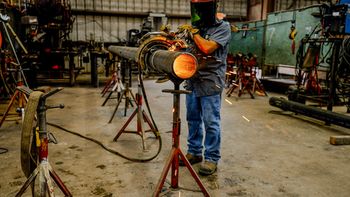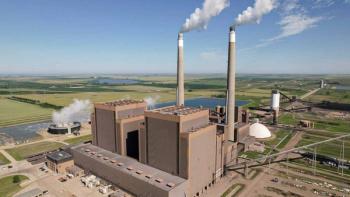
Gas turbines, a roadmap
OEMs and research institutions (private and government) are active in developing “zero-emissions” technologies, which can be classified into three categories:
• Pre-combustion e.g., Integrated Gasification Combined Cycle (IGCC), chemical loop combustion, steam-methane reforming with Carbon Capture and Sequestration (CCS)
• Post-combustion, e.g., amine-based scrubbing with CCS
• Oxy-fuel combustion with CCS, e.g., the Allam cycle
One could also add solar-fired GT (with closed Brayton cycle using supercritical CO2 as the working fluid) and fuel cell plus GT combo (triple combined cycle) to the mix.
Demonstration projects
Enabling technologies for post- and precombustion concepts are readily available and proven with utility-scale demonstration projects. The others, however, require much more work to come to a comparable technology readiness level.
But from a sustainable development perspective, all these technologies are challenged to pass the economic viability test. Some highly publicized cost overruns associated with recent projects suggest that they may have a difficult time overcoming this hurdle. On top of that, it remains to be seen whether CCS will be proven technically and economically, and can also gain widespread public acceptance.
The poster child for sustainable energy generation is renewable generation which constitutes the bulk of the non-hydro resources. Driven primarily by wind and solar, the share of renewable generation in U.S. is projected to increase from 13% in 2013 to 18 to 22% by 2040.
Their high growth rate is spurred by declining costs (especially wind and solar PV) and can be further accelerated by better grid and control technologies and step change innovations in areas such as battery storage.
Wind and solar both suffer from intermittency as well as low energy density. This is where gas turbines in simple or combined cycle enter the picture. Due to their ability to start from standstill and generate full power in about ten minutes, GTs can act as gridstabilizing backup when renewable generation rapidly fades away.
Aeroderivative GTs such as GE’s LMS-100 are prime candidates for this
job (100 MW in 10 minutes). Even large industrial GTs in combined cycle
configuration with fast-start technologies (e.g., Siemens Flex-Plant and GE
Rapid Response) can play the same role with the ability to reach full load in 30 minutes or less. In that regard, Alstom has developed reheat GTs with sequential combustors, which enable them to run at very low loads while still being emissions compliant.
In conjunction with grid support, one should also mention the ability of GTs to provide reactive power control, especially aeroderivatives. In particular, the generator, separated from its prime mover via a synchronous self-shifting clutch, can serve as a synchronous condenser.
In other words, the generator acts as a motor driven by the electrical grid, supplying reactive power to the grid while drawing leading current from it when overexcited, and absorbing reactive power from the grid while drawing lagging current from it when underexcited. This ability is desirable in locations with heavy renewable concentrations, whose asynchronous, induction-type generators require reactive power supply from the grid.
Presently, major OEMs offer advanced H(A)- and J-class GTs with 1,600C turbine inlet temperature (TIT), which are rated at 60+% net efficiency (ISO base load). The enabling technologies are:
• Nickel-based superalloys and casting technologies to make parts with directionally solidified (DS) and single crystal (SX) grain structures
• Thermal barrier coatings (TBC)
• Improved film cooling techniques to reduce chargeable flows while maintaining high gas temperatures
• Dry low NOx/Emissions (DLN/E) combustors to keep NOx emissions down at ever higher TITs
• Advanced brush seals and clearance control systems, e.g., Siemens’ hydraulic clearance optimization (HCO) technology; and 3-dimensional computational fluid dynamic (CFD) codes accompanied by increasing computing power for aero-thermodynamic design of efficient compressor
and turbine stages.
The development history of the aforementioned technologies goes back more
than 20 years to the DOE’s Advanced Turbine Systems (ATS) program, which had set the bar at 60% net efficiency. The next achievement goal is set at 65%.
This performance level hinges on the achievement of at least 1,700°C TIT which competes with the exponential increase in NOx emissions at requisite flame temperatures. Thus combustor development emerges as the key hurdle to be overcome.
Potential solutions include exhaust gas recirculation (EGR) and axial fuel staging (AFS). An obvious and already available solution is the reheat (sequential) combustion. However, in spite of its track record and maturity,
the future of this technology is uncertain due to its inability to capture end user imagination (for the lack of a better term) and the recent acquisition of its manufacturer by a major OEM.
(Read more in the September/October 2015 issue of Turbomachinery International)
Newsletter
Power your knowledge with the latest in turbine technology, engineering advances, and energy solutions—subscribe to Turbomachinery International today.




